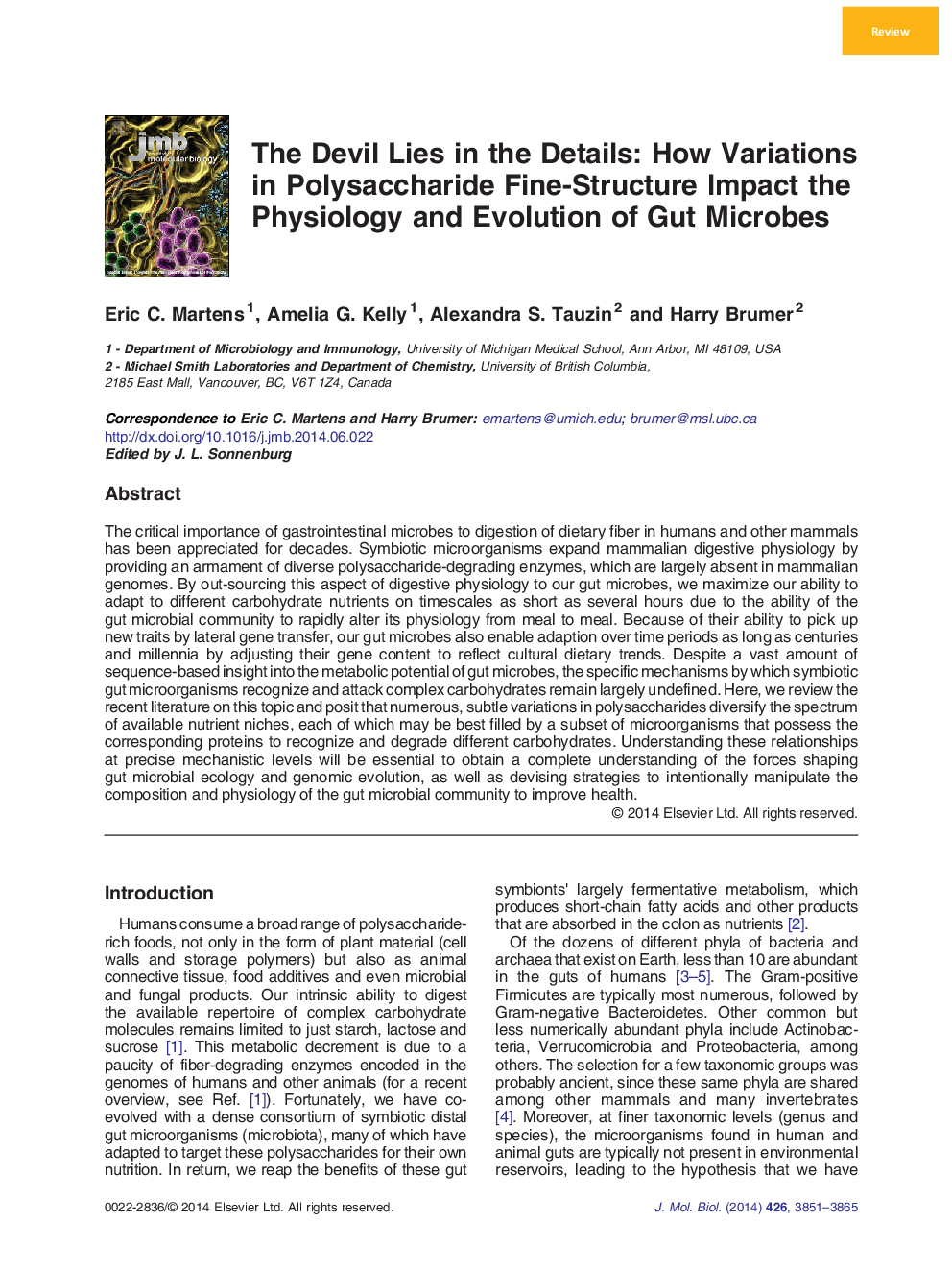| کد مقاله | کد نشریه | سال انتشار | مقاله انگلیسی | نسخه تمام متن |
|---|---|---|---|---|
| 2184399 | 1095838 | 2014 | 15 صفحه PDF | دانلود رایگان |
• Bacteria expand animals' digestive ability by providing polysaccharide-degrading enzymes.
• Dietary and mucosal polysaccharides vary greatly in their fine-level structures.
• Fine-level structural variations diversify available “nutrient niches” for bacteria.
• Expression of microbiota enzymes is dependent on cues contained in polysaccharides.
• Nutrient–microbiota relationships provide concepts to manipulate health.
The critical importance of gastrointestinal microbes to digestion of dietary fiber in humans and other mammals has been appreciated for decades. Symbiotic microorganisms expand mammalian digestive physiology by providing an armament of diverse polysaccharide-degrading enzymes, which are largely absent in mammalian genomes. By out-sourcing this aspect of digestive physiology to our gut microbes, we maximize our ability to adapt to different carbohydrate nutrients on timescales as short as several hours due to the ability of the gut microbial community to rapidly alter its physiology from meal to meal. Because of their ability to pick up new traits by lateral gene transfer, our gut microbes also enable adaption over time periods as long as centuries and millennia by adjusting their gene content to reflect cultural dietary trends. Despite a vast amount of sequence-based insight into the metabolic potential of gut microbes, the specific mechanisms by which symbiotic gut microorganisms recognize and attack complex carbohydrates remain largely undefined. Here, we review the recent literature on this topic and posit that numerous, subtle variations in polysaccharides diversify the spectrum of available nutrient niches, each of which may be best filled by a subset of microorganisms that possess the corresponding proteins to recognize and degrade different carbohydrates. Understanding these relationships at precise mechanistic levels will be essential to obtain a complete understanding of the forces shaping gut microbial ecology and genomic evolution, as well as devising strategies to intentionally manipulate the composition and physiology of the gut microbial community to improve health.
Graphical AbstractVariations in polysaccharide fine-structures (carbohydrate schematics using the symbols listed below) diversify the available nutrient niches in the gut (small circles within the central illustration of the human colon). Some bacteria have adapted their enzymatic and sensory abilities to accommodate these variations.Figure optionsDownload high-quality image (274 K)Download as PowerPoint slide
Journal: Journal of Molecular Biology - Volume 426, Issue 23, 25 November 2014, Pages 3851–3865
